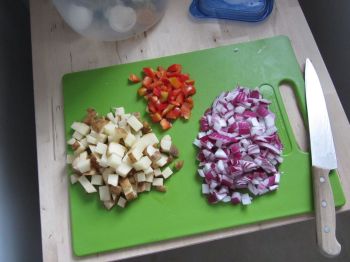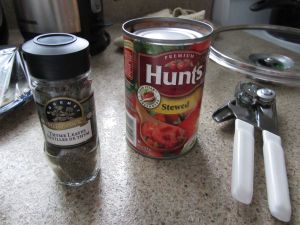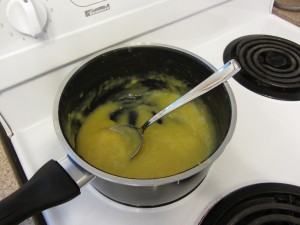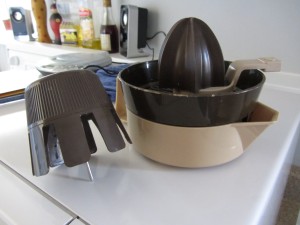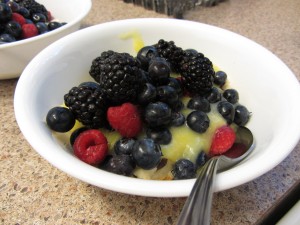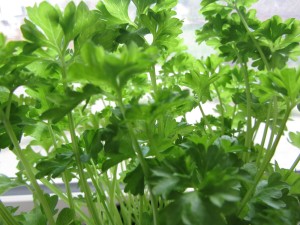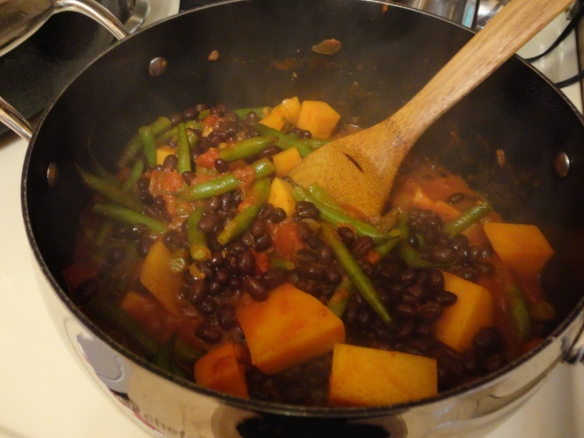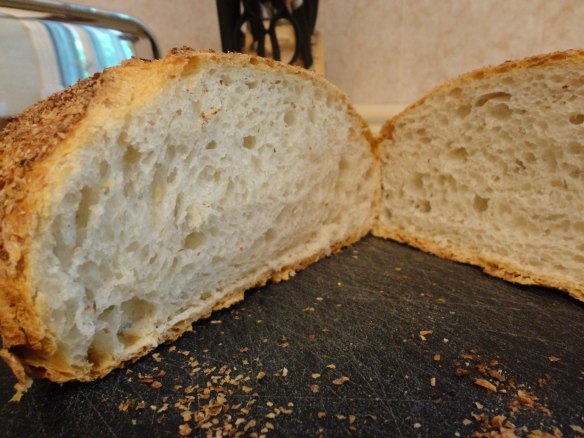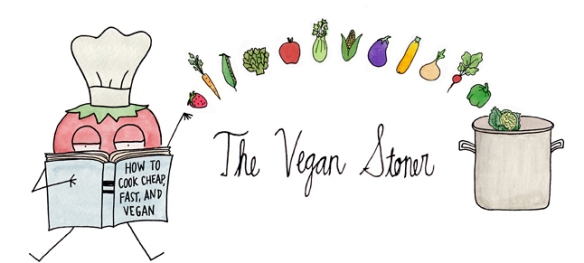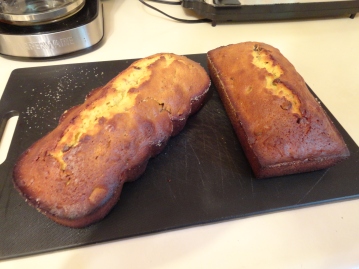So, where is the follow-up to the red velvet cake recipe?
To be honest, I got a little ahead of myself with that one. Instead of looking forward to making a red velvet cake, I began to stress out about it: I don’t know enough people in town yet with whom to share a cake, and I was getting a bit worried about (a) most of the cake going to waste for lack of eaters, or, in order to guarantee more eaters, (b) trying to transport a cake on my bicycle to my workplace to share it with my co-workers. (Nothing doing.)
Stressing out about cake doesn’t really seem in keeping with the spirit of this blog, so I intend to leave red velvet cake aside until a proper cake-eating occasion arises.
In the meantime, I was deciding what to have for dinner this evening: I’ve done a lot of the savoury, veggie-&-greens meals this week and Sunday night seems to call for something different, some comfort food, something more indulgent. What better thing is there for such a desire than pancakes?!

I love making pancakes: they are easy, they are versatile, they are substantial enough to eat for any meal, you can make fun shapes out of them (my father introduced me to the wonders of making hearts and first initials out of pancake batter)…
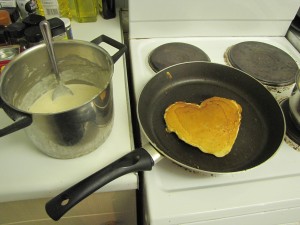
heart-shaped pancakes for valentine’s day
…they are an incredibly social food (many of my friends can attest to at least one occasion where I insisted they come over for a pancake dinner), but also are an easy thing to whip up for one. It is hard to find a more basic kind of cake than a pan-cake.
Julie Van Rosendaal is the genius behind my favourite cookbook: Starting Out.

Kate thinks Julie Van Rosendaal’s ‘Starting Out’ is the best cookbook anywhere.
While the title suggests this cookbook is appropriate for folks just starting out cooking on their own (indeed, I bought it seven years ago when I was moving out to attend university and had little experience in the kitchen), I continue to use and love it. This plain paper, simple, glossy-photo-free cookbook features basic recipes, shows you how to alter them, subtract, substitute, or add ingredients to suit your taste, and ultimately helped me to develop confidence and competence in the kitchen.
But I digress.
Forget the pancake mix. Making pancakes from scratch is simple and quick, plus from-scratch pancakes taste so much better than those made from pancake mix! The best part is that you might already have most of the ingredients in your kitchen, or maybe you’ve got the dregs of a carton of buttermilk or some spare eggs that you’re wondering what to do with.
–x–
Pancakes
from Julie Van Rosendaal’s Starting Out
Ingredients
2 cups (500 mL) buttermilk or 2 cups (250 mL) milk plus 1 Tbsp (15 mL) lemon juice or vinegar
2 cups (500 mL) all-purpose flour (or hald whole-wheat, half all-purpose)
2 Tbsp (30 mL) sugar
2 tsp (10 mL) baking powder
1/2 tsp (2.5 mL) baking soda
1/4 tsp (1 mL) salt
1 large egg
2 tbsp (30 mL) melted butter or oil
Any additions you like: fresh or frozen (unthawed) berries, sliced banana, chopped or ground nuts
[I’m a big fan of banana pancakes with chocolate chips.]
Directions
(1) If you are using regular milk, pour it into a small bowl or measuring cup and stir in the lemon juice or vinegar; set the mixture aside for a few minutes.
(2) In a large bowl, stir together the flour, sugar, baking powder, baking soda, and salt. Stir the egg and melted butter or oil into the buttermilk or milk mixture with a fork or a whisk.
(3) Make a well in the dry ingredients and pour in the milk mixture; stir just until the two are combined. Don’t worry about getting all the lumps out– overmixing may result in tough pancakes.
(4) Set a large non-stick skillet over medium heat. When the skillet it hot (test it by flicking some drops of water on it – they should bounce) spray it with non-stick spray or drizzle it with oil and swirl to coat it. Ladle the batter onto the skillet, making the pancakes any size [or shape!] you like. If you want to add berries, slices of banana, or anything else, scatter them directly onto the pancakes as they cook.
(5) Turn the heat down and cook the pancakes for a few minutes, until the bottoms are golden and bubbles begin to appear in the surface. When the surface appears almost dry with lots of bubbles breaking through, use a thin, flat spatula to flip the pancakes over and cook them for another minute, until they’re golden on the other side.
(6) Repeat with the remaining batter. If you need to keep the finished pancakes warm, keem them uncovered on a plate in a 200˚F (110˚C) oven. [Or, a more energy friendly alternative: just stack them on a plate in the microwave. You don’t need to run the microwave: just popping them in and closing the door is enough insulation.] If you don’t want to cook them all at once, the beftover batter can be covered and kept in the fridge for several days.
(7) Serve the pancakes with maple syrup [or Saskatoon berry syrup], or thaw a package of frozen berries in syrup to top them with.
–x–
One batch is enough for three hungry ladies. This recipe splits in half easily (I half everything, but still use one egg). A half-batch is enough for one hungry lady with leftovers for a couple breakfasts/snacks/lunches/dinners.

pancakes with saskatoon berry syrup
Happy eating!
–x–
More Jule Van Rosendaal
Julie talks about Blueberry/Saskatoon Berry Perogies on the CBC Calgary Eyeopener and she writes wonderful articles like this one about delicious, healthy alternative foods for Swerve Magazine on a fairly regular basis. She’s also on Twitter, and she writes about ‘real meals’ on her ‘reality cookbook’ website, Dinner with Julie.


